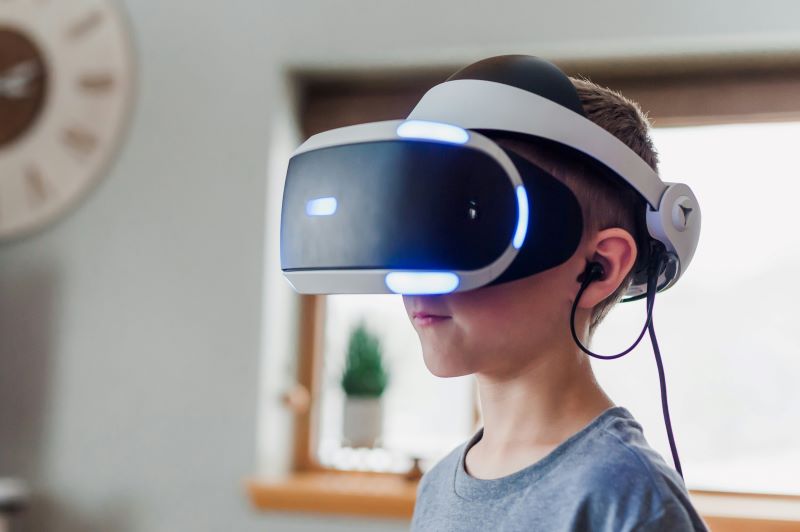Augmented Reality (AR) is one such technology that has revolutionized various industries. When combined with augment reality QR codes, AR offers a powerful tool for creating interactive and immersive experiences.
What is an AR QR Code?
AR QR codes are an advanced form of traditional QR codes that incorporate augmented reality technology.
When scanned with a smartphone or AR-enabled device, these codes trigger AR experiences such as 3D animations, interactive content, or informational overlays in the real world.
Unlike traditional QR codes that redirect users to a static webpage or display plain text, AR QR codes provide a dynamic and engaging user experience.

Technology Behind AR QR Codes
The technology behind AR QR codes involves several key components:
● AR Software: This includes AR development platforms and SDKs (Software Development Kits) that enable the creation of AR content.
● QR Code Generators: An online QR code generator allows users to create and customize QR codes embedded with AR triggers.
● AR Viewer Apps: These applications are necessary to scan and display the AR content. Many smartphones now come with built-in AR capabilities, making it easier for users to access AR experiences.
Benefits of AR QR Codes
1. Enhanced User Engagement
AR QR codes are highly effective in capturing and retaining user attention. The interactive nature of AR experiences makes them more engaging than traditional media, leading to longer interaction times and increased user satisfaction.
2. Improved Data Collection
Businesses can use AR QR codes to gather detailed data on user interactions. This data can include how users engage with the AR content, which can provide valuable insights for improving future campaigns and strategies.
3. Increased Conversion Rates
By offering an engaging and interactive experience, AR QR codes can significantly boost conversion rates. Customers who interact with AR content are more likely to make a purchase or take the desired action.
Practical Applications of AR QR Codes
1. Retail and E-commerce
In the retail and e-commerce sectors, AR QR codes are transforming the shopping experience. Customers can use these codes to virtually try on products like clothing and accessories or see how furniture fits in their homes before making a purchase.
2. Marketing and Advertising
AR QR codes have opened new avenues in marketing and advertising. Brands are using these codes to create interactive campaigns that captivate and engage customers.
For example, a beverage company might use AR QR codes on their packaging to let customers see a 3D animation of their product journey from farm to table.
Case studies have shown that such interactive campaigns significantly boost user engagement and brand recall.
3. Education and Training
AR QR codes are also making strides in education and training.
Educators can use these codes to provide students with interactive learning experiences.
For instance, a biology teacher can use AR QR codes to bring 3D models of cells and organisms into the classroom, making complex subjects easier to understand.
4. Tourism and Navigation
Tourism is another industry benefiting from AR QR codes. Tourist attractions can enhance visitor experiences by providing AR-guided tours and interactive information points.
For example, scanning a QR code at a historical site could show a 3D reconstruction of how the site looked in the past.
How to Create AR QR Codes?
To create AR QR codes, you need a reliable and online QR code generator.
Creating AR content is crucial for the success of your AR QR codes. Consider what type of AR experience will be most engaging for your audience.
Whether it's a 3D animation, an interactive tutorial, or a virtual product try-on, the content should be visually appealing and easy to interact with.
Once you have designed your AR experience, use a code generator to create your QR codes. It's essential to test the codes thoroughly to ensure they work correctly across different devices and AR viewer apps.
For maximum impact, integrate AR QR codes into your broader marketing, education, or business strategy. Use them in campaigns, product packaging, educational materials, or event promotions to enhance user engagement and achieve your goals.
The future of AR QR codes looks promising as technology continues to advance. With improvements in AR software and the increasing availability of AR-enabled devices, the potential applications of AR QR codes are expanding. Businesses across various sectors can leverage this technology to create innovative and engaging experiences for their customers.
In summary, QR codes and Augmented Reality offer a powerful way to engage users, collect valuable data, and increase conversion rates.
Start leveraging the potential of AR QR codes today with a QR code generator, and take your marketing, education, or business strategy to the next level.
Frequently Asked Questions about AR QR Codes
1. How are QR codes used as triggers for AR?
QR codes are used as triggers for Augmented Reality (AR) by embedding information that can activate AR content when scanned with a smartphone or AR-enabled device.
When a user scans a QR code, the encoded data directs the device to an AR application or platform, which then displays interactive and immersive content such as 3D models, animations, or informational overlays in the real world.
2. What is the difference between AR markers and QR codes?
The primary difference between an AR marker and a QR code lies in their design and function.
An AR marker is typically a distinct image or pattern designed specifically to be recognized by AR software, which then overlays digital content onto the marker's physical location.
In contrast, a QR code is a type of barcode that stores data in a grid of black and white squares and is primarily used to link users to websites, apps, or other digital content when scanned.




